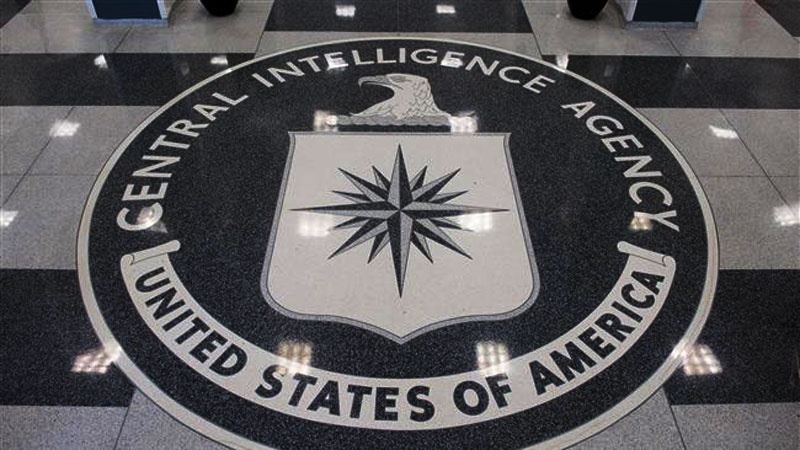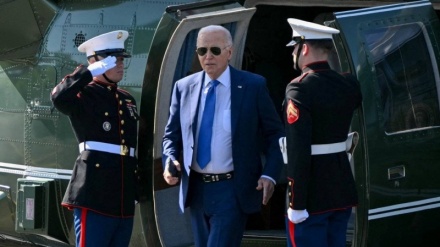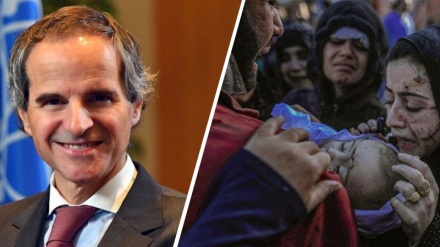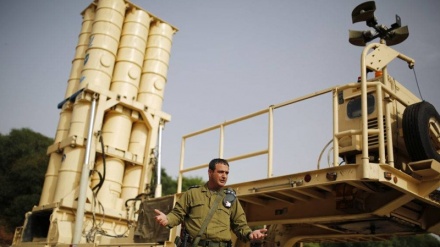Top CIA objective: Fracture the Eurasian bloc
Here are the excerpts from an article written by Caleb Maupin, a political analyst and activist based in New York. He studied political science at Baldwin-Wallace College and was inspired and involved in the Occupy Wall Street movement.
US Presidential Candidate Donald Trump is known by some for being very tactless. However, he also has a way of openly stating what other billionaires are thinking, but are afraid to say out loud. In one of his earliest interviews, Trump stated a concern that is probably on the mind of many foreign policy analysts. He said: “You can’t have everybody hating you. The whole world hates us. One of the things that I heard for years and years, never drive Russia and China together, and Obama has done that.” It’s not only Donald Trump who has this concern. The Council on Foreign Relations, CFR, a Wall Street think tank that can otherwise be described as the CIA’s brain, has become obsessed with the issue. The latest issues of the CFR’s publication, Foreign Affairs, speak of the China-Russia alliance at length.
The Eurasian bloc and its allies have scored key economic victories against the United States and Western Europe on the global market. State-controlled industries in Mainland China, which was considered the impoverished, semi-feudal “sick man of Asia” just 70 years ago, now produce half of all the steel and aluminum on Earth. Russia’s oil and natural gas resources are being sold across Europe, and the Islamic Republic of Iran is starting to move into these markets as well.
The global economic set-up has long functioned like the Roman Empire, where “all roads lead to Rome,” or in this case, to Wall Street and London. But as Eurasia raises its head, bringing South America and parts of the Middle East along with it, the world no longer has to buy its steel, aluminum, and oil from Western corporations. Markets are slipping out of Western fingers. Developing countries no longer have to take out loans from the World Bank and the International Monetary Fund. The “New Silk Road” vision from China, the stabilization of Russia and the Islamic Revolution of Iran, and the Bolivarian movement of Latin America, have all created something western capitalists have never tolerated: competitors.
It is maintenance of monopoly on the global market, not some phony concern about “human rights” or “expansionism” that drives the rising hostility against Russia, China, and any country that dares align with them. Regimes that function as obedient Western clients violate human rights and engage in aggression all the time.
The oil vassals of in the region, Saudi Arabia in particular, make no pretense honoring human rights. The number of human rights activists and dissidents who have been killed, tortured, or disappeared in US-aligned certain Latin American countries is incalculable. The US-aligned Turkish state, which has an ugly history of atrocities against the Kurds, is now rounding up college professors and anyone else who dares question or “insult” President Erdogan.
The US-backed regime in Ukraine has a division of its armed forces called the Avoz Battalion. Not only does the US openly align with the anti-Russian, Hitler fanatics in Kiev as they wage brutal war against their Eastern compatriots, but US military personnel reportedly provides them with training. The concept of “human rights” has been completely politicized by well-funded foundations that promote the geopolitical goals of Wall Street. Voices in US media raise their “concerns” about human rights almost exclusively against countries that dare assert their economic independence or align with Russia and China.
Like the Southern plantation owners who claimed they were “civilizing” and “bringing freedom” to those they enslaved, the NATO military machine and its Wall Street paymasters always claim they are overthrowing governments because they have a big heart, and are flowing with compassion for those who are suffering. As the attacks on Libya, Iraq, Afghanistan, and now Syria have shown, the “innocent victims”, who become the focus of propaganda campaigns promoting the so-called “humanitarian intervention,” usually end up in far-worse circumstances than before.
The division of the Soviet Union and the People’s Republic of China was a key factor in the outcome of the Cold War. In 1961, the Chinese Communist Party and the Communist Party of the Soviet Union had incompatible foreign policy strategies. Mao Zedong’s China had become a symbolic epicenter of anti-colonial struggles in the Third World. Khruschev’s Soviet government was desperately trying to engage in diplomacy in the hopes of preventing atomic war. The Soviet Union cut its ties with the People’s Republic of China in 1961, as China denounced Soviet leaders as “revisionists” and “betrayers” of the cause of global revolution. The division between the two great powers escalated over the course of the following decade. Border disputes erupted. By the early 1970s, the final years of Mao Zedong’s life, the most populous country on earth was no longer telling its allies to oppose Western capitalism, but rather that “Soviet Social Imperialism” was assumed as the “main danger” to humanity.
This shift weakened anti-capitalist and anti-imperialist forces significantly. The Chinese invasion of Vietnam, the civil war between leftist factions in oil rich Angola, the re-alignment of Poland, Romania, Albania, and various other European Marxist governments, were all decisive in the eventual defeat of the Soviet Union. However, since the end of the Cold War, the geopolitical relationship that was broken apart in 1961 with the “Sino-Soviet Split” has gradually re-emerged.
As the Russian Federation became more stable and economically prosperous after the disasters of the 1990s, it became closer to the People’s Republic of China. The two countries have formed an economic and political alliance that is once again challenging the monopoly of Western capitalism.
In Russia, the economy is centered on the export of publicly owned oil and natural gas resources. In China, the state controls banking and most major industries. Both Russia and China long ago abandoned the kind of “really existing socialism” pioneered by Stalin with his “Five Year Plans.” However, neither Russia nor China can truly be described as capitalist. In both countries, the decisions of state central planners, not the anarchy of production, dictate the majority of economic activity. The two countries have many billionaires, yet both governments are not afraid to punish capitalists who stray from the state’s overall economic vision.
The Russian and Chinese states are not like the corporatocracies of the West. Their strength comes from highly organized and deeply politicized populations, both committed to a collective nationalist vision. Western liberalism with its glorification of profits and individualism is collapsing in the face of a collectivist alternative. Over the course of the 20th century, the Eurasian societies learned to restrain and control market forces. This has made them stronger than many Western analysts can even imagine.
The Eurasian Bloc now lays the basis for the primary alternative to Western capitalism on the global stage. Brazil and the Islamic Republic of Iran have economies and states that function in almost the same way as Russia and China. The Bolivarian movement in Latin America has unleashed a more traditionally leftist and Marxist version of this economic model, and both Cuba and the Democratic People’s Republic of Korea are gradually shifting in this direction. Interestingly, a recently published article, also from the Council on Foreign Relations, touts “the use of economic instruments to accomplish geopolitical objectives” as an “American Tradition.”
The oil price drop has created political problems, not just in Russia, but primarily among its allies in South America. The United Socialist Party suffered its first significant electoral defeat in recent history with the US-funded opposition winning at the polls in December. In Brazil, a political crisis has unfolded surrounding the fiscal problems of Petrobas, the state-owned oil company. The once popular, left-wing President Dilma Rousseff, who is very friendly to Russia and China, now faces impeachment.
The economic attack in the form of low oil prices is being followed up by another gem from the CIA’s toolbox, Wahabbism. Religious extremism of the variety found in Saudi Arabia is getting stronger in the Middle East. Violent extremists, better to say terrorists, such as Daesh and the Al-Nusra front are powerful in sections of Syria and Iraq. CIA training camps in Jordan, the open Turkish-Syrian borders, and the continued flow of weapons into Syria from US-aligned Persian Gulf states, have made the terrorists current stronger than ever.
The CIA has been friendly with Takfiri extremists for a long time. Osama Bin Laden comes from a wealthy Saudi family with a near monopoly construction within the Kingdom. His career as an extremist began in Afghanistan, where he cooperated with the USA and NATO to fight against the People’s Democratic Party and the Soviet Union during the 1980s.
The Council on Foreign Relations, an entity that works closely with the CIA, now openly predicts the rise of anti-Chinese and anti-Russian religious extremism in Kyrgyzstan, Kazakhstan, Tajikistan, Turkmenistan, and Uzbekistan. The strategy employed by the Obama administration to attack the Eurasian Bloc is two-fold. First, create economic problems by dropping oil prices. Secondly, unleash extremists to foment chaos and warfare.
Unlike Bush’s direct military attacks on Afghanistan and Iraq, which resulted in high oil prices and widespread contempt for the United States – even among NATO allies – the Obama-CIA strategy is a long-term plan. It is similar to Brzezinski’s strategies during the “détente” of the Carter administration. It is much better for the United States in terms of public relations, and it is much less risky. But the CIA strategy of economic warfare and the use of proxies to attack Eurasia has a key weakness: it’s not very profitable.
Oil companies are losing money as prices stay low. Furthermore, military spending has become an essential part of the US economy since the end of the Second World War. The stock market is already starting to feel the pain. If the US economy is to continue functioning as usual, oil prices cannot remain low and military adventurism around the world cannot remain off the table.
While it is seems contrary to basic human decency, the economy of the USA needs high prices at the pump and mass slaughter around the world in order to keep functioning. Drone strikes and the militarization of domestic US police departments are not enough. Eventually, the market forces will demand that oil prices and military spending increase. However, with the Eurasian bloc stronger than ever, the consequences of direct military attack will be much higher than before.
As it seems, the Wall Street is determined to break apart the Eurasian bloc, but this is a task that appears to be almost impossible. The world simply cannot function in the old way any longer. The outdated methods of colonizers and profiteers are being terminated. Profits simply cannot stay in absolute command, and a firm hand from society must force economies to function in a rational way.
EA/SS



